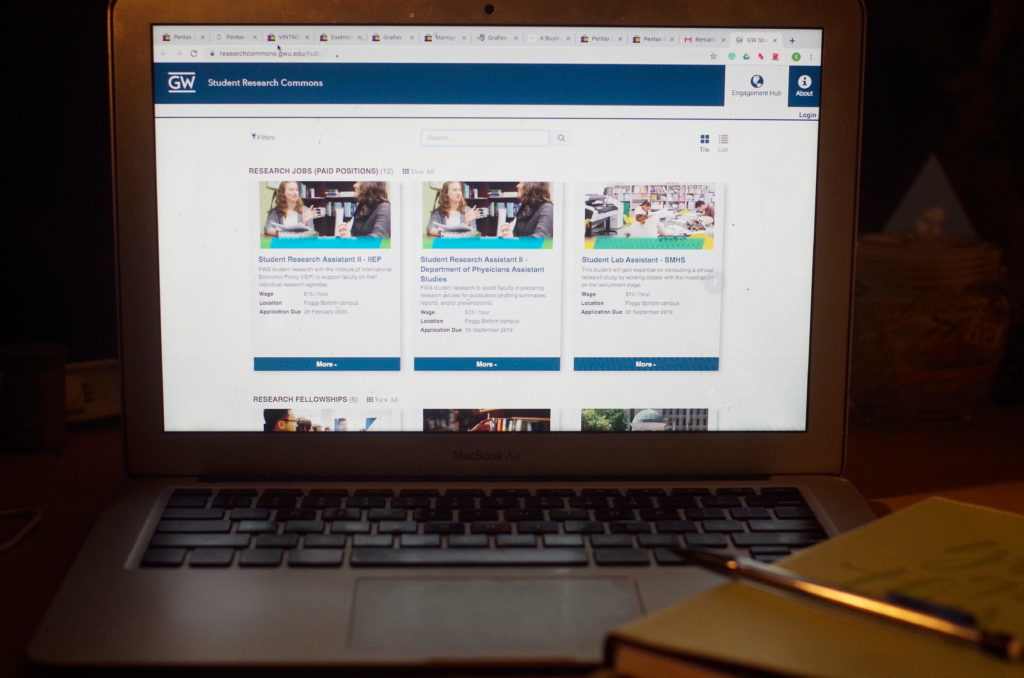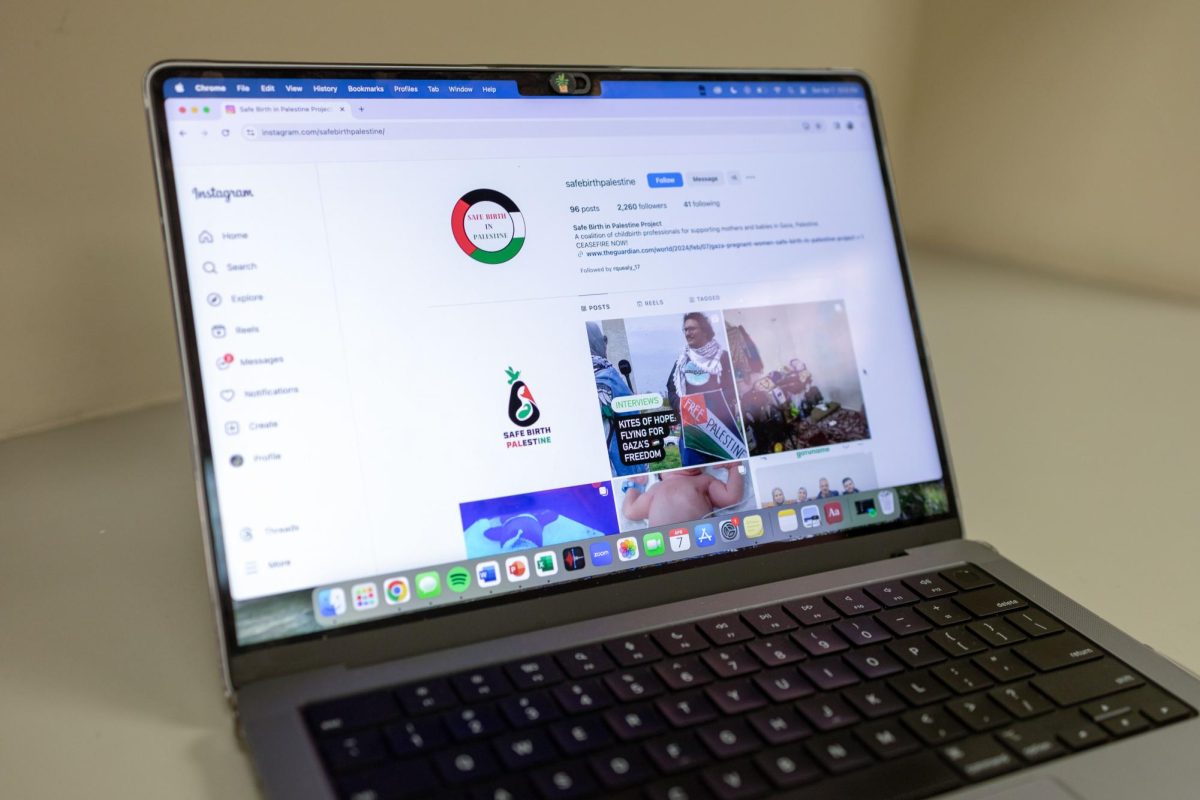A website designed to help students find research opportunities will move GW toward its goal of increasing collaborative research, officials said.
Administrators earlier this month launched the GW Student Research Commons website, which will allow faculty to post their research project openings for undergraduate and graduate students and postdoctoral fellows. Officials said the website will allow students to more easily get involved in research and learn the skills necessary to conduct their own research.
Robert Miller, the vice president for research, said in a release earlier this month that officials expect the number of postings on the website to gradually increase as more faculty members become aware of the site. There are currently 18 posts advertising open research positions on the website, in addition to funding opportunities and research events.
“The site was developed and launched in response to student feedback as well as goals set by the University’s strategic initiatives related to research and the student experience,” he said in the release. “It exemplifies the sorts of innovations that are only possible through close collaboration between the research and academic enterprises.”
The website was the result of a partnership between student researchers and several offices, including the Office of the Vice President for Research, the Office of the Provost and the Office for Student Success, the release states.
Former Vice President for Research Leo Chalupa considered increasing student involvement in faculty research one of his main goals and contributed to the creation of The GW Undergraduate Review, a student-run academic journal. Miller said in May that he planned to continue getting undergraduate students involved in research by working with the provost’s and president’s offices.
Academic research experts said the new website will give students more options to get involved with research and will help faculty find potential research assistants.
Edward Hackett, the vice provost for research at Brandeis University, said students are “more interested than ever” in accumulating research experience. He said websites like GW’s provide students with the chance to find professors who they may not have encountered in class.
“A number of students are interested in research opportunities but a little shy, so they’re unwilling to take the initiative and go to a professor and ask,” Hackett said. “So I think having the website as an intermediary might make more students feel free to ask for the opportunities.”
Hackett said websites that aggregate research opportunities also give students and postdoctoral researchers the chance to engage in academic research that suits their interests.
“Research and broad inquiry in any field, including the arts and humanities, brings us another way to think and to learn,” he said. “Actually, many of us learn better that way.”
Karl Reasoner, the program manager of the undergraduate research opportunities program at the University of Oregon, said that if undergraduate students take advantage of the website to find a research opportunity, they will leave college with competencies that will make them more attractive in the job market.
“Undergraduates often view their education as a pathway into a career, so from that lens, participation in undergraduate research can provide them with a wide variety of skills that employers in all fields are looking for,” he said in an email.
Reasoner said his school has a similar “centralized” website that has improved the ability of faculty to recruit research assistants. He said faculty members who use the website could connect with other faculty and collaborate on similar projects.
“The conventional wisdom is that cross-disciplinary, or interdisciplinary research, brings together unique perspectives and insights that can yield innovative approaches to challenging research questions,” Reasoner said.
Sarah Privoznik, a program coordinator at the Howard Hughes Medical Institute Science Education Program at the University of Miami, said GW’s website may be more successful if officials can effectively advertise it through channels like email.
Privoznik added that the website is useful for both STEM students and students in all areas of study. Allowing faculty to update the website themselves will keep it up-to-date and improve its usefulness as a resource for students, she said.
“I think so much of research, people think of it being only in the STEM field, in science,” she said. “If you have a database that is accessible by all colleges and all faculty, I could see that definitely bridging the gap between collaboration.”
Alec Rich contributed reporting.








